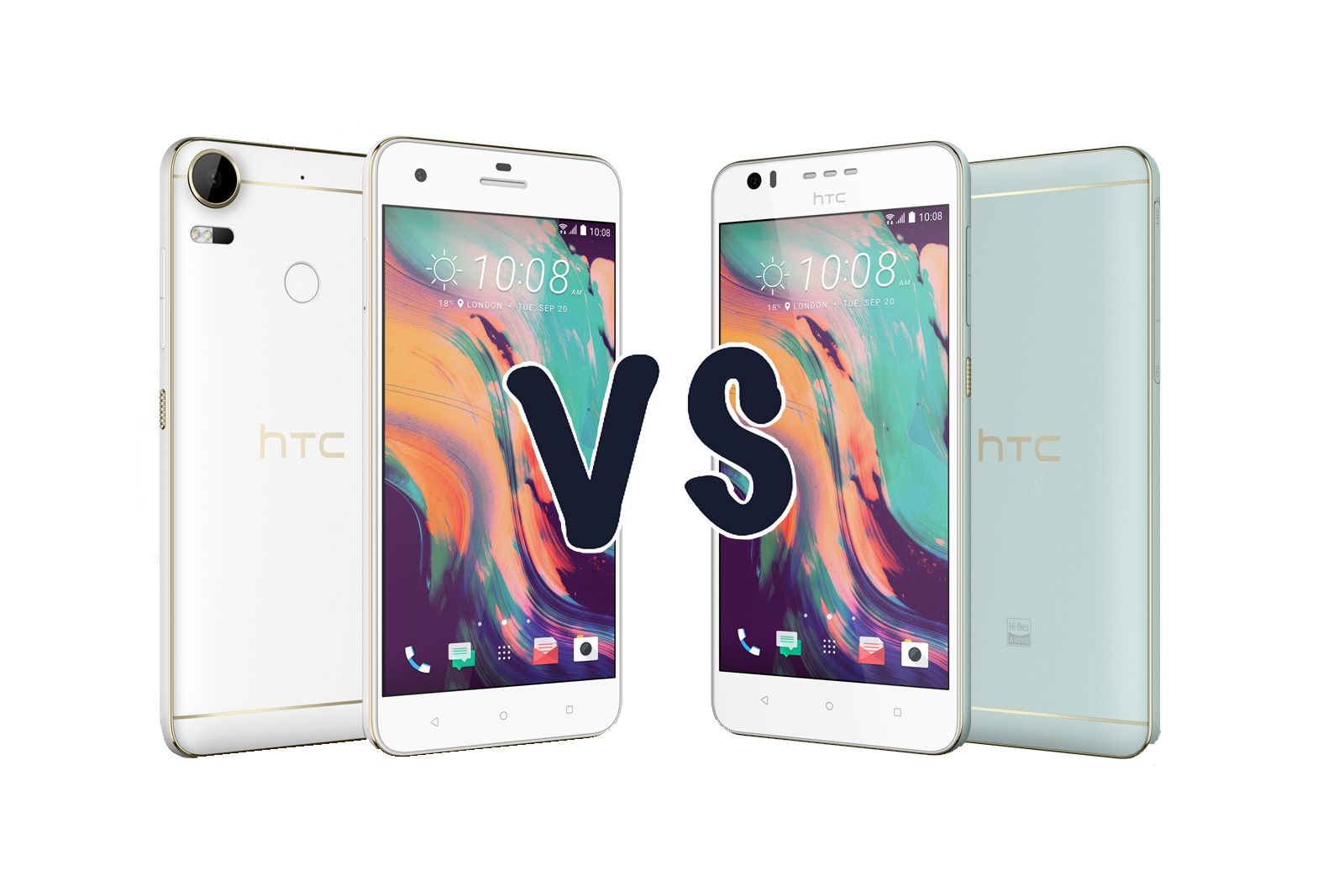HTC has pulled the old trick of launching two devices with the same sort of name, but with very different specs.
The HTC Desire 10 is the latest addition to HTC's mid-range. One of the distinctive things about the Desire 10 is the design, with gold trim framing the distinct colours, giving a contrast finish reminiscent of art deco classic design.
But aside from the option for a "valentine lux" coloured handset these are two very different devices. So just what is the difference?
HTC Desire 10 Pro vs Desire 10 Lifestyle: Design
As we've just mentioned, the design of these handsets is essentially the same, or it is in terms of overall colour, build and finish.
The HTC Desire 10 Pro measures 156.5 x 76 x 7.86mm and weighs 165g; the official specs for the Desire 10 Lifestyle read out as 156.9 x 76.9 x 7.7mm and weighs 155g. That's 10g of weight, but an otherwise negligible difference in footprint.
There are some key differences, however, as the Desire 10 Lifestyle offers BoomSound speakers, so there are speakers in the top of the display and base of the handset which are much more pronounced. The Lifestyle also offers a lanyard attachment point on the bottom.
Finally the Pro has a SIM and SD card tray released with a pin, the Lifestyle has a flap.
HTC Desire 10 Pro vs Desire 10 Lifestyle: Display
When it comes to the display, things start to be more radically different.
The HTC Desire 10 Pro has a 5.5-inch IPS display topped with Gorilla Glass, with a 1920 x 1080 pixel resolution. This full HD resolution means a pixel density of 400ppi.
The Desire 10 Lifestyle also has a 5.5-inch display, which HTC says is Super LCD and also topped with Gorilla Glass. The resolution drops to 1280 x 720 pixels. Spread across this large display, that means it offers 267ppi, which is pretty low.
Undoubtedly, between the two, the HTC Desire 10 Pro display is going to look sharper.
HTC Desire 10 Pro vs Desire 10 Lifestyle: Hardware specs
Not only is the display different between these two handsets, but the hardware specs are too.
The Desire 10 Pro has a MediaTek Helio P10 chipset and is supported by either 3 or 4 GB of RAM depending on the region you buy it. Either way, there should be plenty of power for everyday tasks.
The Desire 10 Lifestyle has a Qualcomm Snapdragon 400 chipset, 3GB of RAM and 32GB of storage. It's certainly lower spec than the Pro handset and although we've seen devices on Snapdragon 400 that run just fine, we suspect it will be outclassed by its sibling handset.
There's also a difference in the battery: the Desire 10 Pro has a 3000mAh battery, the Desire 10 Lifestyle has a 2700 mAh battery. Both offer fast charging.
HTC Desire 10 Pro vs Desire 10 Lifestyle: Audio stylings
While the Desire 10 Pro is shaping up to be the better handset, the Lifestyle does have itself a solid skill in the audio department.
As we've mentioned the Desire 10 Lifestyle has a slightly different design to accommodate the BoomSound speakers. BoomSound has been a massive hit for HTC and the latest iteration - BoomSound Hi-Fi Edition - carries on the stellar stereo performance.
On the Desire 10 Lifestyle, the headphone experience is boosted by the inclusion of a 24-bit DAC and Hi-Res Audio certification, as well as Dolby Audio. Plug in and you'll be getting great audio.
The HTC Desire 10 Pro has a mono speaker and lacks this boosted BoomSound performance.
HTC Desire 10 Pro vs Desire 10 Lifestyle: Cameras
The Desire 10 Pro fights back with boosted cameras. There's a 20-megapixel sensor on the back, offering a f/2.2 lens and supported by laser autofocusing and a dual LED flash. There's a 13-megapixel camera on the front, which offers a wide-angle selfie capture so you can fit all your friends in.
The Desire 10 Lifestyle has a 13-megapixel rear camera, also with f/2.2 lens. Less megapixels doesn't necessarily mean lesser performance, although there's no laser autofocus and only a single LED flash.
The Desire 10 Lifestyle has 5-megapixel front camera. Again, the resolution is probably perfectly adequate for your selfies.
HTC pitches the Desire 10 Pro as the superior camera handset, but the difference may not be as big as the difference in pixels suggests.
Conclusions
The missing part of this puzzle is price. We know that the Desire 10 Lifestyle will £249, but the Pro will cost more, priced between the Lifestyle and the HTC 10.
That could see the HTC Desire 10 Pro looking expensive for the money, especially if it runs into the price brackets of some of those upper mid-range handsets.
As for this comparison, the Desire 10 Lifestyle only really has audio on its side. If you're looking for an affordable handset boasting superior audio performance, then the HTC Desire 10 Lifestyle may well be it.
The HTC Desire 10 Pro on the other hand offers a collection of reasonable mid-range specs. If you're looking for a day-to-day phone that looks a little different, then go Pro.

